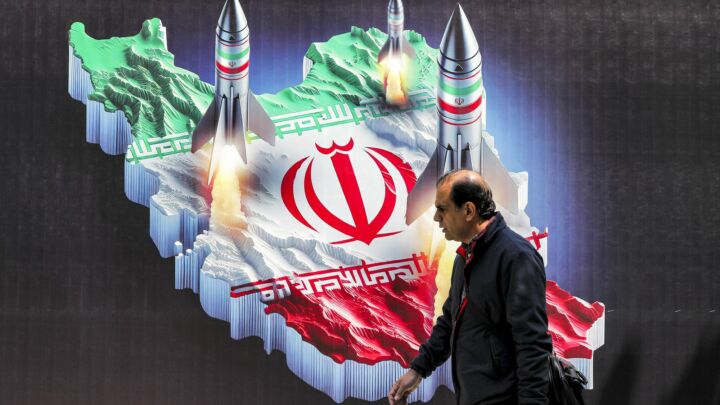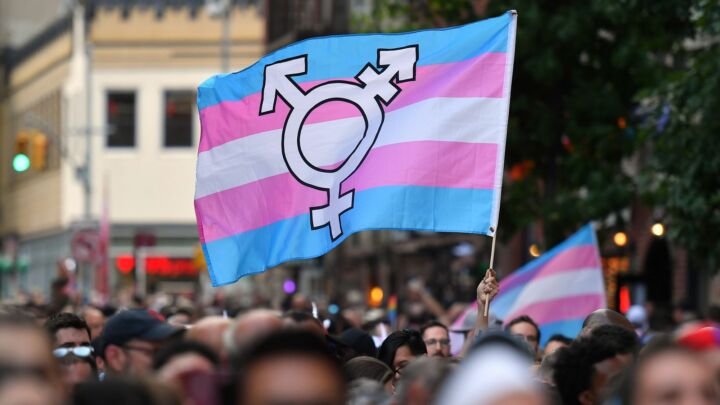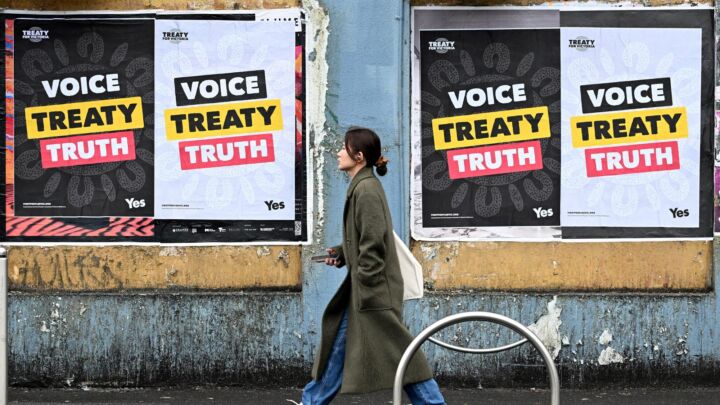Dumb intelligence
How America lost its snooping skills.

After the 11 September attacks on America, the intelligence arms of the US government came under immense scrutiny – both for their failure to anticipate the attacks and for their responsibility for averting future attacks.
As a result of this surge in interest, a spate of books on US intelligence has been published in recent months, providing a fascinating history of institutions that have mirrored the political shifts of the past century.
According to Rhodri Jeffreys-Jones, author of Cloak and Dollar: A History of American Secret Intelligence, ‘The American public has been importuned to believe in a variety of menaces and crises that…have ranged from Confederate assassination plots to western land fraud, from white slavery to communism, from German sabotage to Chinese espionage, from crack cocaine scares to digital encryption’ (1).
Many of the recent books are written by ex-intelligence workers, and some are little more than uncritical hagiography. Joe Griffin, co-author of Mob Nemesis: How the FBI Crippled Organised Crime and an FBI employee for 30 years, writes: ‘I loved raiding this place. Usually, we would bag half the “made” guys in Buffalo in these raids, providing us with the opportunity to not only obtain current mugshots, but also to talk to them while they were under some stress. We raided this place about once a month.’ (2)
Other veterans are more willing to dish the dirt. John F Sullivan, who was a polygraph examiner for the CIA, describing polygraphing as ‘about 92 percent art and eight percent science’, admits in his book Of Spies and Lies: A CIA Lie Detector Remembers Vietnam that: ‘Vietnam was a cash cow for employees with financial concerns, a refuge for those trying to escape bad marriages, a last chance for poor performers hoping to resurrect failing careers.’ (3)
The most interesting of these employees-turned-authors is former CIA agent Robert Baer, a seasoned pro who despairs of the decline of US intelligence gathering. ‘In 1995 the agency handed the title of director of operations…to an analyst who had never served overseas’, Baer complains. ‘You’ve got to have human intelligence to do it – people on the ground, agents, access agents, a network of traitors, and a case officer willing and able to work it…. In the end, intelligence boils down to people.’ (4)
This is an important point, and is borne out by the Cold War escapades described in James Bamford’s Body of Secrets: Anatomy of the Ultra-Secret National Security Agency. In the heyday of the Cold War, the US government had no qualms about sacrificing its own men.
Consider the U-2 spy plane employed in the 1950s and 1960s – Bamford explains that despite the fact that ‘a number of safety devices were built into the aircraft, including a specially designed ejection seat’, in truth, in the event of a crash, ‘the U-2 was rigged to prevent any possibility of a pilot surviving’ (5).
Richard J Aldrich’s The Hidden Hand: Britain, America and Cold War Secret Intelligence, notes that no such duplicity was necessary for the U-2 unit in Taiwan, where ‘all pilots were given suicide equipment, and on the flight line the crews were all adamant that if they were intercepted they would destroy their planes’ (6).
This kind of ruthless ideological pragmatism was difficult to sustain when, despite winning the Cold War, the US elite lost another war – the Culture Wars. These disputes over American values, and the corresponding corrosion of old certainties, saw politically correct philosophies influencing the highest echelons of US power – including intelligence.
Rhodri Jeffreys-Jones outlines the key episodes. A 1991 government study of the CIA administration ‘found that 45 per cent of the agency’s female personnel complained of sexual harassment and of being denied promotions’. In 1995, then US President Bill Clinton issued an executive order ‘enabling those who were openly gay to work in the intelligence community…. Within a year, a group within the CIA had organised the Agency Network of Gay and Lesbian Employees (ANGLE), while…NSA workers formed a chapter of Gay, Lesbian and Bisexual Employees (GLOBE).’
The intelligence agencies tried to give a positive spin to these developments, claiming that they ‘saw diversification of personnel as essential to the successful accomplishment of diversification of function’ (7). In reality, such changes caused big problems for US intelligence – not because women and homosexuals were inferior agents, but because the preoccupation with new forms of etiquette militated against the discipline and self-sacrifice necessary to gather intelligence for a political purpose.
Robert Baer’s anecdotes starkly illustrate this problem. In 1989, several people in the CIA’s Paris office joined a new age church and devoted much of their time and resources to converting others to their faith. The Paris CIA chief complained to Washington, ‘only to be told that he couldn’t do anything that might violate anyone’s First Amendment rights. If case officers wanted to pump for God on the CIA’s time, so be it’ (8).
Another of Baer’s anecdotes points to a connection between the loss of the Culture Wars and intelligence failures prior to the 11 September attacks. When Baer was posted in Takijstan in the 1990s, he ‘repeatedly asked for a speaker of Dari or Pashtun, the two predominant languages in Afghanistan, to debrief the flood of refugees coming across the border…. I was told the CIA no longer collected on Afghanistan, so those languages weren’t needed. Headquarters instead offered to send out a four-person sexual harassment briefing team’ (9).
Another consequence of the loss of consensus around American values was a growth of infighting between US intelligence agencies. Richard J Aldrich explains that from early on, ‘intelligence consisted of separate fiefdoms that fought bitterly over policy and resources’ (10). But in the post-Cold War era, when intelligence agencies could no longer even agree on the greater political good, such squabbles became endemic.
James Bamford explains that by the late 1980s, ‘the intelligence NSA related to other American spy agencies…was so santised – stripped of sensitive information – that it was almost useless’ (11). Rhodri Jeffreys-Jones describes how in the 1990s, ‘the FBI targeted the CIA and tried to invade its former territory, in this way protecting the size of their domain at the expense of a rival’ (12).
Despite the declining standards in US intelligence, intelligence bodies retained their long-standing disregard for civil liberties – in particular the right to privacy.
Such disregard had been far more blatant in the past. Ronald Kessler recalls how back in 1919, J Edgar Hoover had his agents compile index cards of political radicals, ‘indiscriminately entering on each card a mix of hearsay, rumour and fact’ (13). This set a trend that Hoover would continue during his 48 years as FBI director, an epic tale of corruption, paranoia and blackmail, comprehensively recounted in The Bureau.
Hoover’s use of political influence, legal loopholes and careful phrasing meant that under his directorship, the FBI’s brief constantly expanded and its accountability constantly diminished. Wiretapping phones, ostensibly an illegal practice in the USA, has been practiced by the FBI since its inception. Kessler describes how Hoover ingeniously evaded separate bans on wiretapping issued by the US authorities in 1924, 1934 and 1940.
From 1941, the FBI practiced ‘Z-coverage’ – the systematic monitoring of post, telegraph and cable. The NSA was no better – James Bamford describes how in Operation Shamrock, which ran from the 1950s to the 1970s, ‘the major US telegraph companies…secretly turned over to NSA, every day, copies of all messages sent to or from the USA’ (14).
To a certain extent, such activities had to be cut back after the Cold War. But at the same time, in other ways it became easier to justify surveillance. In the past, surveillance had to be justified in the political terms of national security. After the Cold War, it could be justified in personal terms. A culture of fear and a heightened sensitivity to risk gave the intelligence agencies a new, albeit less stable, form of legitimacy as the custodians of our personal safety.
This trend was crystallised by the 11 September attacks and their aftermath. The attacks provided an all-encompassing reason for Americans to feel afraid, and put a brake on the post-Cold War reduction of surveillance. This is why Ronald Kessler can fume that prior to 11 September, ‘civil libertarians, privacy advocates, extreme conservatives, and tech industry lobbyists had succeeded over the years in imposing restrictions that made no sense on FBI operations’. Kessler captures the new subordination of civil liberties to personal security, when he asks: ‘Whose rights were violated more, those whose phones are tapped by court order or those who died in the 11 September attacks?’ (15)
Since the 11 September attacks, US intelligence has had a new pretext for expanding its activities – and this is bad news for anyone who cares about civil liberties. But such expansion does not mean that the damage done to US intelligence during the Culture Wars can be undone. A busy agency is not necessarily an intelligent agency.
Take the NSA’s blindness to the 11 September hijackers. In Body of Secrets, Bamford gives a fascinating description of NSA headquarters, ‘Cryptro City’ in Maryland, where over 32,000 people work in 50 buildings connected by 32 miles of roads. Crypto City has everything – its own police force, SWAT team, post office, bank, yacht club, big band and annual film festival. Its budget for 1995-1999 was over $17billion, and its deputy director for services says that ‘were we a corporate company…we kind of bench ourselves against Hewlett Packard’ (16).
In the days preceding the 11 September attacks, five of the terrorists responsible stayed in a motel next to NSA headquarters. They even joined a local gym frequented by NSA employees.
This may be ‘an irony of tragic proportions’, as Bamford puts it (17), and Rhodri Jeffreys-Jones has a point when he says that ‘well-planned surprise attacks are notoriously difficult to predict’ (18). But the NSA – a behemoth, bloated by public funds, watching the world while overlooking its own doorstep – is still emblematic of the deficiencies of post-Cold War intelligence. It is not the size that matters, but the quality.
Today’s US intelligence thrives more on public fear than on national ideology, and is fitted up with all the latest technology, while lacking dedicted agents in the field. It has retained its latitude to snoop on the public and to soak up public money. The trouble is, today’s political culture is no longer conducive to the acquisition of actual intelligence.
Sandy Starr has consulted and written on internet regulation for the Organisation for Security and Cooperation in Europe, and for the European Commission research project RightsWatch. He is a contributor to Spreading the Word on the Internet: Sixteen Answers to Four Questions, Organisation for Security and Cooperation in Europe, 2003 (download this book (.pdf 576 KB)); From Quill to Cursor: Freedom of the Media in the Digital Era, Organisation for Security and Cooperation in Europe, 2003 (download this book (.pdf 399 KB)); and The Internet: Brave New World?, Hodder Murray, 2002 (buy this book from Amazon (UK) or Amazon (USA)).
Read on:
Bush has won the battle, but not yet the war, by Mick Hume
One war that Bush has already lost, by Mick Hume
Intelligence tests, by Sandy Starr
Not-so-secret services, by Josie Appleton
spiked-issue: After 11 September
(1) Cloak and Dollar: A History of American Secret Intelligence, Rhodri Jeffreys-Jones, Yale University Press, 2002, p4. Buy this book from Amazon (UK) or Amazon (USA)
(2) Mob Nemesis: How the FBI Crippled Organised Crime, Joe Griffin and Don DeNevi, Prometheus Books, 2002, p87. Buy this book from
Amazon (UK) or Amazon (USA)
(3) Of Spies and Lies: A CIA Lie Detector Remembers Vietnam, John F Sullivan, University Press of Kansas, 2002, p14 & 4. Buy this book from Amazon (UK) or Amazon (USA)
(4) See No Evil: The True Story of a Ground Soldier in the CIA’s War on Terrorism, Robert Baer, Crown Publishers, 2002, p xviii & 81. Buy this book from Amazon (UK) or Amazon (USA)
(5) Body of Secrets: Anatomy of the Ultra-Secret National Security Agency, James Bamford, Anchor Books, 2002, p52. Buy this book from
Amazon (UK) or Amazon (USA)
(6) The Hidden Hand: Britain, America and Cold War Secret Intelligence, Richard J Aldrich, Overlook Press, 2002, p534. Buy
this book from Amazon (UK) or Amazon (USA)
(7) Cloak and Dollar: A History of American Secret Intelligence, Rhodri Jeffreys-Jones, Yale University Press, 2002, p279-280. Buy this
book from Amazon (UK) or Amazon (USA)
(8) See No Evil: The True Story of a Ground Soldier in the CIA’s War on Terrorism, Robert Baer, Crown Publishers, 2002, p138. Buy this
book from Amazon (UK) or Amazon (USA)
(9) See No Evil: The True Story of a Ground Soldier in the CIA’s War on Terrorism, Robert Baer, Crown Publishers, 2002, p164-165. Buy
this book from Amazon (UK) or Amazon (USA)
(10) The Hidden Hand: Britain, America and Cold War Secret Intelligence, Richard J Aldrich, Overlook Press, 2002, p13. Buy this
book from Amazon (UK) or Amazon (USA)
(11) Body of Secrets: Anatomy of the Ultra-Secret National Security Agency, James Bamford, Anchor Books, 2002, p384. Buy this book from Amazon (UK) or Amazon (USA)
(12)Cloak and Dollar: A History of American Secret Intelligence, Rhodri Jeffreys-Jones, Yale University Press, 2002, p261. Buy this book
from Amazon (UK) or Amazon (USA)
(13) The Bureau: The Secret History of the FBI, Ronald Kessler, St Martin’s Press, 2002, p15. Buy this book from Amazon (UK) or Amazon (USA)
(14) Body of Secrets: Anatomy of the Ultra-Secret National Security Agency, James Bamford, Anchor Books, 2002, p434. Buy this book from Amazon (UK) or Amazon (USA)
(15) The Bureau: The Secret History of the FBI, Ronald Kessler, St Martin’s Press, 2002, p439 & 442. Buy this book from Amazon (UK) or Amazon (USA)
(16) Body of Secrets: Anatomy of the Ultra-Secret National Security Agency, James Bamford, Anchor Books, 2002, p481. Buy this book from Amazon (UK) or Amazon (USA)
(17) Body of Secrets: Anatomy of the Ultra-Secret National Security Agency, James Bamford, Anchor Books, 2002, p617. Buy this book from Amazon (UK) or Amazon (USA)
(18) Cloak and Dollar: A History of American Secret Intelligence, Rhodri Jeffreys-Jones, Yale University Press, 2002, p288. Buy this book
from Amazon (UK) or Amazon (USA)
To enquire about republishing spiked’s content, a right to reply or to request a correction, please contact the managing editor, Viv Regan.








Comments
Want to join the conversation?
Only spiked supporters and patrons, who donate regularly to us, can comment on our articles.